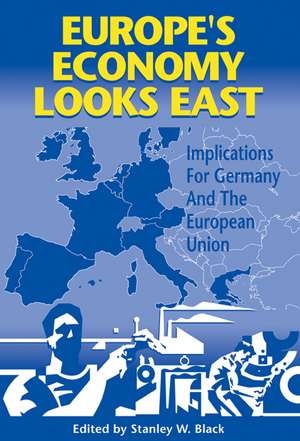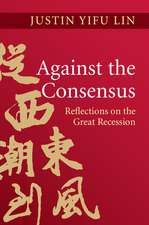Europe's Economy Looks East: Implications for Germany and the European Union
Autor Stanley W. Blacken Limba Engleză Paperback – 29 oct 2008
| Toate formatele și edițiile | Preț | Express |
|---|---|---|
| Paperback (1) | 323.81 lei 6-8 săpt. | |
| Cambridge University Press – 29 oct 2008 | 323.81 lei 6-8 săpt. | |
| Hardback (1) | 783.81 lei 6-8 săpt. | |
| Cambridge University Press – 27 mar 1997 | 783.81 lei 6-8 săpt. |
Preț: 323.81 lei
Nou
Puncte Express: 486
Preț estimativ în valută:
61.96€ • 66.26$ • 51.66£
61.96€ • 66.26$ • 51.66£
Carte tipărită la comandă
Livrare economică 18 aprilie-02 mai
Preluare comenzi: 021 569.72.76
Specificații
ISBN-13: 9780521088237
ISBN-10: 0521088232
Pagini: 384
Ilustrații: 26 b/w illus.
Dimensiuni: 152 x 234 x 22 mm
Greutate: 0.56 kg
Editura: Cambridge University Press
Colecția Cambridge University Press
Locul publicării:New York, United States
ISBN-10: 0521088232
Pagini: 384
Ilustrații: 26 b/w illus.
Dimensiuni: 152 x 234 x 22 mm
Greutate: 0.56 kg
Editura: Cambridge University Press
Colecția Cambridge University Press
Locul publicării:New York, United States
Cuprins
1. Introduction Stanley Black; Part I. Trade Relations: 2. An economic assessment of the integration of Czechoslovakia, Hungary, and Poland into the European Union Drusilla Brown, Alan Deardorff, Simeon Djankov and Robert Stern; Comments J. David Richardson and L. Alan Winters; 3. Potential trade with core and periphery: industry differences in trade patterns Hari Vittas and Paulo Mauro; Comment Susan M. Collins; 4. Impact on German trade of increased division of labor with Eastern Europe Dieter Schumacher; Comments Wolfgang Maennig and Ellen Meade; Part II. Investment Patterns: 5. Investment and its financing during the transition in Central and Eastern Europe Stanley Black and Mathias Moersch; Comments Holger Wolf and Douglas Todd; 6. Privatization, structural change and productivity: towards convergence in Europe? Paul J. J. Welfens; Comments Bruce Kogut and Jan Mládek; Part III. Labor Market Issues: 7. Integrating the East: the labor market effects of immigration Thomas Bauer and Klaus Zimmerman; Comments Barry Bosworth and Robert LaLonde; Part IV. The Process of Integration: 8. Joining the club: options for integrating Central and Eastern Countries into the European Union Michael Koop; Comments Barry Eichengreen and Hans-Jürgen Vosgerau; Index.
Descriere
This 1997 volume examines the transition of the Central and Eastern European countries towards membership in the European Union.

















